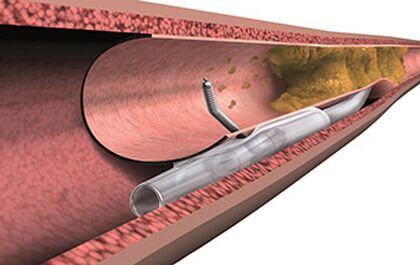Successful rechanneling of a chronic total occlusion (currently around 90%) leads to significant improvement in quality of life and symptom frequency in patients with stable chronic angina compared with optimal medical treatment alone. These results are promising and what we ultimately expected, although symptoms, as a primary endpoint in themselves, are in the eye of…
Stroke Rate after CABG vs PCI in over 10,000 Patients
Repeat revascularization rate has historically been the weak spot of PCI when compared against CABG: we are still unable to compete with a well done internal mammary artery graft connected to the anterior descending artery. However, repeat revascularization is the soft of end points commonly assessed in trials, and even though several studies have shown…
Frailty: What Happens When We Are Too Late in Critical Lower Limb Ischemia
This condition, now “trending” among patients undergoing transcatheter aortic valve replacement (TAVR), has expanded to almost all patients we treat, always with the same outcome: the prognosis is bad, so bad that it might warrant making the difficult decision of not going forward. The association between frailty and bad prognosis is easy to see and…
HIV and Peripheral Artery Disease: Acknowledging the Association
The role of human immunodeficiency virus (HIV) in the development of vascular disease (specifically peripheral artery disease) remains unclear. Is the virus per se the direct cause of this disease or is it a consequence of dyslipidemia, one of the adverse effects of antiretrovirals? This study looked into the effect of HIV infection on peripheral…
OCT Provides Hints About the Physiopathology Behind Very Late Stent Thrombosis
Neoatherosclerosis was frequently observed in patients who experienced very late stent thrombosis, particularly those with drug-eluting stents. In-stent plaque rupture was the most common cause of thrombosis and it usually occurred in cases in which the original procedure had been carried out while the patient was undergoing an acute myocardial infarction. Macrophage infiltration can be…
Relive the SOLACI-SOCIME 2018 Congress
Over 2180 professionals from all over the world gathered in Mexico City to continue developing interventional cardiology in Latin America. Relive the event through this video! We are interested in your opinion. Please, leave your comments, thoughts, questions, etc., below. They will be most welcome.
MITRA-FR: Percutaneous Repair or Medical Treatment for Secondary Mitral Regurgitation
Courtesy of Dr. Adolfo Ferrero. INTRODUCCION: In patients with chronic heart failure and reduced left ventricular ejection fraction, severe secondary mitral valve regurgitation is associated with bad prognosis. Whether percutaneous mitral valve repair improves clinical results in this patient population, remains unclear, despite prior multicenter studies supporting this view. METHODS: Patients with severe secondary mitral…
A Simple Trick to Improve Our Transradial Punctures
Transradial access is here to stay; that much has been clear for some time now. However, some operators still resist change and the systematic use of this technique shows great geographical dispersion. Some of its limitations are a difficulty to obtain access and the somewhat frequent occurrence of radial artery occlusion after the procedure. This…
Antiaggregation Time after Treating Bifurcations
Defining dual antiplatelet therapy (DAPT) seems a never-ending story. We go from trials showing the safety of shorter schemes thanks to new generation stents to others suggesting up to two years of DAPT. Rather than finding a general scheme, it seems to be about adjusting DAPT on a case by case basis, according to ischemia…
ESC 2018 | ART: Disappointment with Bilateral Internal-Thoracic Artery Grafts After a 10-Year Follow-Up
Published 5-year results had been neutral for bilateral vs. single internal-thoracic artery grafts, but, at the time, surgeons argued that the time period analyzed was not enough and that a difference would be observed after 10 years of follow-up, once the trial finished. Such follow-up was presented at the European Society of Cardiology (ESC) Congress 2018…









